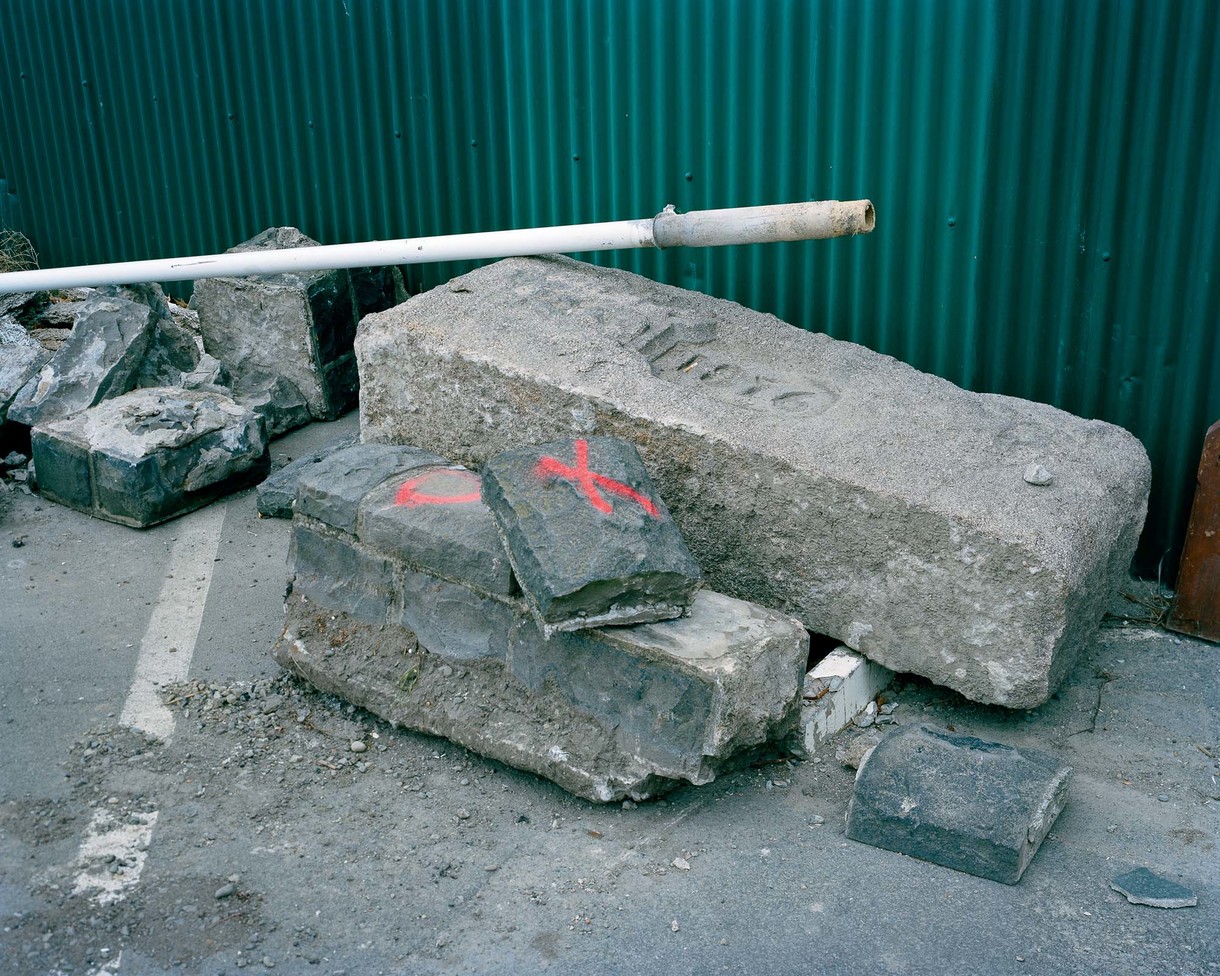Commentary
B.
Bulletin
New Zealand's leading
gallery magazine
Latest Issue
B.21701 Sep 2024
Contributors

Commentary
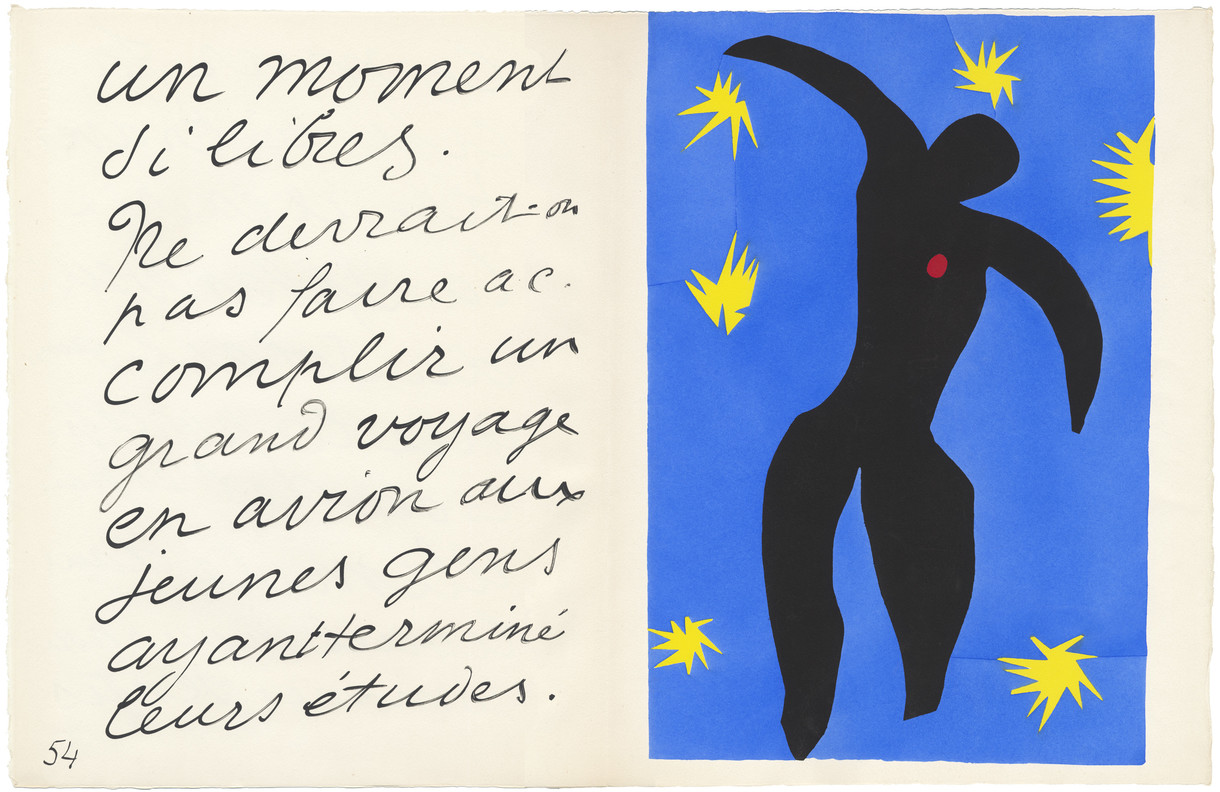
Henri Matisse's Jazz
Henri Matisse’s Jazz is a book that has captivated art lovers and bibliophiles around the world. But it is unlike any other artist’s book that Matisse produced. Designed as an album of colourful prints using his emerging découpage cut-out technique, he fashioned his images on the colour and movement of the circus and created them long before he authored the accompanying text. Abandoning the printed font, he wrote out every word of his typescript by hand. Created during World War 2, Jazz had a phenomenal impact when Greek born publisher Stratis Eleftheriades, professionally known as Tériade, launched it in 1947. When analysed through the prism of his artist’s books he produced during the war, Matisse emerges as a silent activist against the German Occupation of France.
Commentary
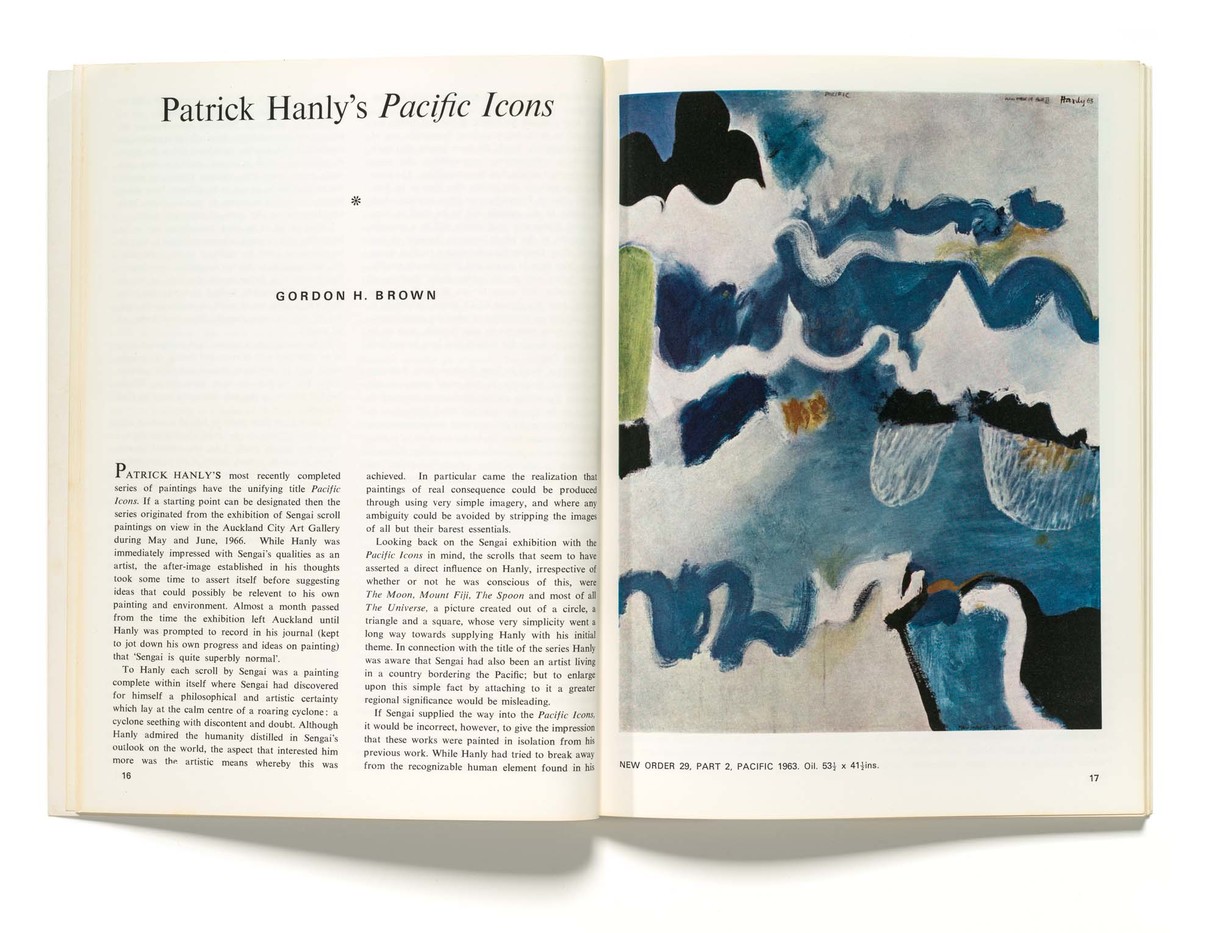
Barbara Brooke: The Woman Behind Ascent
The 1960s brought television, youth culture, jet aircraft and The Beatles to New Zealand. It also saw the emergence of the professional contemporary artist. Dealer galleries were on the rise across the country, devoted to the promotion and sale of contemporary artists’ work, particularly through solo shows, and with them came the possibility of an acknowledged career with the objective of full-time practice. Artists were producing work with a general sense of confidence and this lively art community needed to be documented.
Commentary

Len Lye Works
The glancing body of a hooked swordfish; the shivering skin of a panicky horse; a shiny tin kicked in rage by a young boy outside the Cape Campbell lighthouse. This triptych of memories was the inspiration for avant-garde New Zealand sculptor, painter and film-maker Len Lye’s Blade (1972–4) – a vertical band of steel that curves, flexes, arches then hammers frenetically against a cork ball in a fury of light, sound and movement.
Commentary

Anticipation and Reflection
This is a time of considerable anticipation at the Gallery: Bridget Riley’s new work for Christchurch is due for completion in late May 2017. A wall painting, it’s the fourth of five significant works chosen to mark the long years of our closure for seismic strengthening following the Canterbury earthquakes of 2010–11. It has been paid for, sight unseen, by a group of wonderful women donors, with further support for costs associated with its installation secured by auction at our Foundation’s 2016 gala dinner.
Commentary

The Camera as a Place of Potential
To Māori, the colour black represents Te Korekore – the realm of potential being, energy, the void, and nothingness. The notion of potential and the presence of women are what I see when I peek at Fiona Pardington’s 1997 work Moko. And I say peek deliberately, because I am quite mindful of this work – it is downright spooky. Moko is a photographic rendering of a seeping water stain upon the blackboard in Pardington’s studio, taken while she was the recipient of the Frances Hodgkins Fellowship in Dunedin in 1997.
Commentary
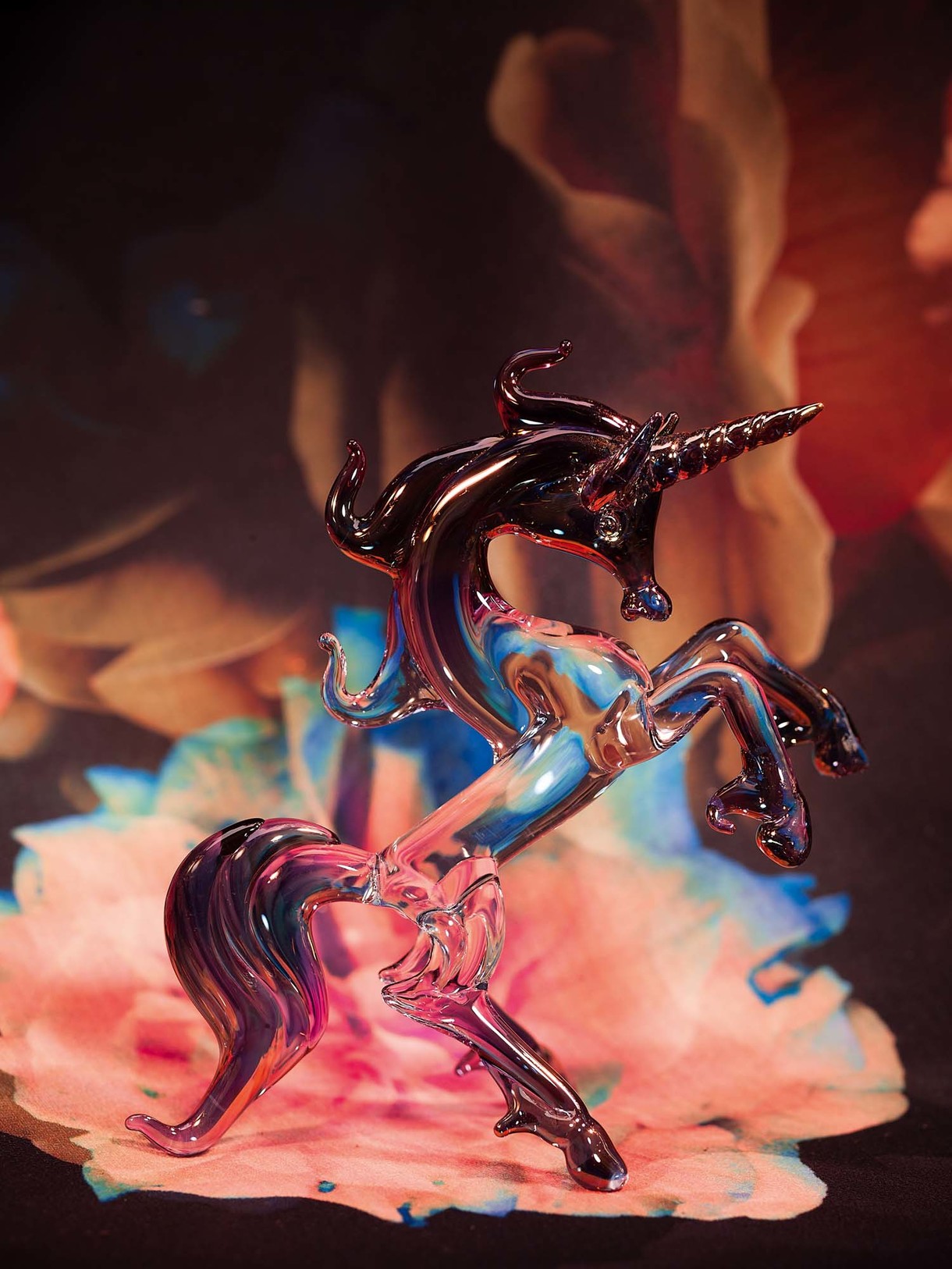
Beyond The Fields We Know
In the canons of received taste, the unicorn figurine doesn’t rank terribly highly beyond kitsch. Sitting in your hand, it’s cutesy, twee, trivial and quaint (though a piece of master-worked Venetian glass from Murano is a pricey and collectable item).
Commentary

Finding Barry Cleavin
Exploring and documenting the contents of Barry Cleavin’s archive in the Robert and Barbara Stewart Library and Archives was both a novel and an invaluable experience for me.
Commentary
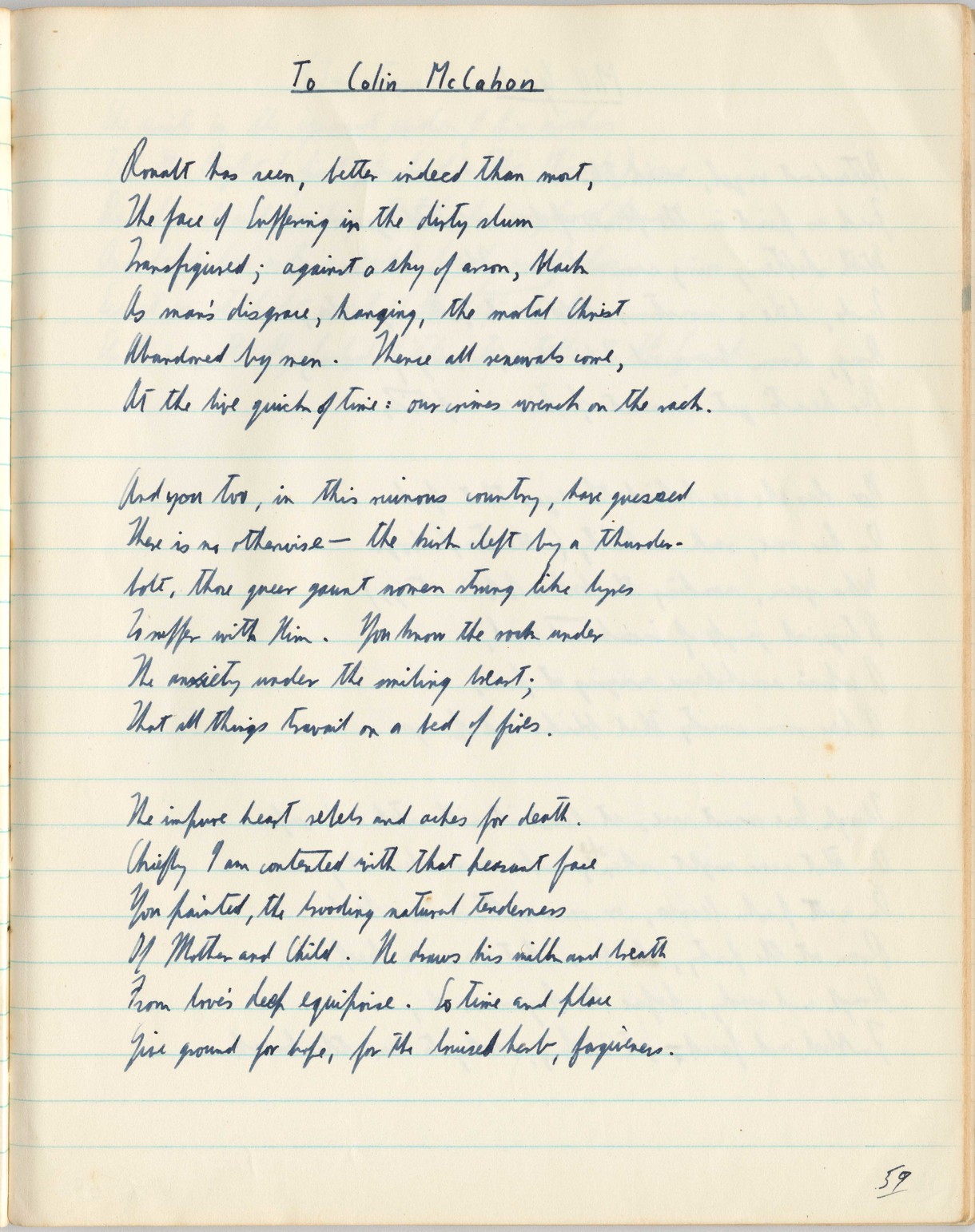
To Colin McCahon
James K. Baxter’s 1952 poem ‘To Colin McCahon’ is an important marker in the long and sometimes tempestuous artistic relationship the two men shared. On an immediate level, the poem is a response to McCahon’s painting There is only one direction (1952), which he presented to Jim and Jacquie Baxter to mark the birth of their daughter Hilary after they had named McCahon her godfather.
Commentary

A Perspective on Pacific Art in Christchurch
Pacific art is one of the more internationally successful and innovative sectors of New Zealand’s art industry, but Pacific artists in Ōtautahi have struggled to be a visible part of the city’s cultural landscape. Due to our small population and distance from the Pacific art capital that is Auckland, our artists have often developed in relative isolation, relying on our Pasifika arts community to maintain a sense of cultural vitality, belonging and place within the city.






